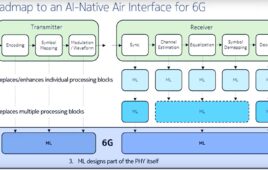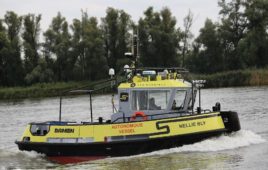Currently poised to become the successor to radar, lidar is a means of surveillance and mapping currently in its infancy with significant upside. Lidar sensors work by bouncing laser beams off nearby objects to create highly detailed 3D maps of their surroundings. The most popular lidar devices are roughly the size of a coffee cup, and fire 64 laser beams (one on top of the other), as the device spins circularly. The beams in conventional lidar sensors are separated from each other at an angle of .4˚, with a maximal range of 120 meters.
These qualities are commendable and a testament to how far along lidar technology has come. Having said that, the features aren’t necessarily enough to assist high-speed vehicles in unpredictable situations (like a car traveling at 70 mph, which would have just four seconds for responding to an obstacle). The angular resolution of current lidar sensors isn’t even close to being high enough for making out objects far away, since the laser beams will be too spaced apart for returning a genuine image. This is why many autonomous vehicles utilize data from other sensors for recognizing obstacles (in addition to using their lidar sensors).
These design shortcomings prompted many of the world’s top driverless car projects to start developing their own systems. Lidar manufacturer Velodyne has developed a new device capable of seeing in greater depth and detail than any known lidar sensor presently available. The device (known as VLS-128) is one-fifth the size of conventional lidar sensors, and can hopefully satisfy demands for increased performance from this particular technology sector.
The new sensor has 128 laser beams (more than twice the amount in current models), which are each separated by angles only .1˚ apart, have a range of 300 meters, and create up to four million data points per second during their spinning motion. The increase in resolution will provide detail so articulate that cars won’t need additional sensors to detect obstacles, but may still carry other sensors for the sake of redundancy and safety. As a result, vehicles should be able to more reliably detect objects with lidar data and enable autonomous cars to cope better in faster-moving surroundings.
For the time being however, it’s unlikely we’ll start seeing these sensors in conventional autonomous vehicle any time soon, as only big companies will likely be able to afford the VLS-128. Velodyne hasn’t released any pricing info on the lidar sensor, many estimates project the VLA-128 price to (at the very least) cost thousands of dollars upon entering mass production (it’s not entirely certain when that will happen).
Previous models (like the HDL-64E) haven’t even reached mass production, and still cost upwards of $80,000 per unit. When the VLA-128 first becomes publically available, it’s likely the lidar sensor will first be installed in robotic taxis and autonomous trucks before reaching consumer vehicles.




